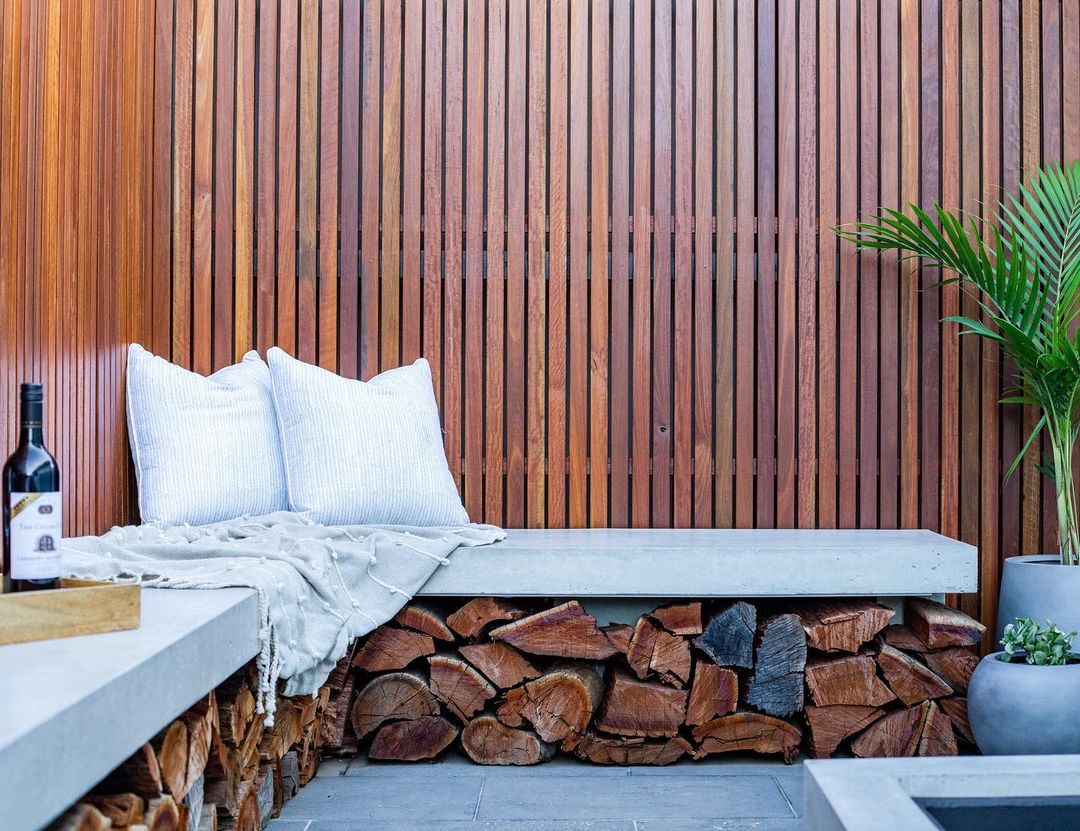Normal paling fence
On a normal paling fence the extensions are made to slip over the palings with the short leg sitting on the rail side and the long leg going down on the paling side.
A common misconception that a lot of customers have is thinking that the extensions need to match up with the posts in order to screw in to the posts for support. This is often a more difficult and more expensive way of installing.
The best way to install is actually to ignore the posts simply measure your fence line divide that measurement by 2.4, which will calculate how many full lengths you need across the span. Then you want to pop the fence extension on top of the fence, find the nail line on the paling side of the fence, which tells you where the rail is on the other side. Then you can simply use a 75mm galvanized screw to secure the extension by screwing in through the long leg through the palings and into the rail on the other side.
Do I need my neighbor’s permission to put up fence extensions?
This is a very commonly asked question. Technically you should get permission before putting up an extension, as the fence is communal, however in our experience a fence extension generally provides a mutual benefit of security and privacy for both neighbors so there is generally no issues with 99.9% of our customers putting up fence extensions.
As it is very rare for the council to get involved in a matter between 2 neighbors unless it is specifically brought to their attention by one of the neighbors involved. So I guess it just depends on your neighbor and how difficult you think they might be.
If you have an incredibly fussy neighbor that doesn’t want a fence extension on the fence and you still want more privacy from them, the best way to go would be to erect a new structure in front of the fence on your side of the property and you can attach some of our premade hardwood screens to get the privacy and security you are after.
What if I have the rail side of the fence and I want to secure the extension from my side?
Ok this depends on a few factors, such as, how high you are going on top of your fence, the design of the extension you are after and the area they are being placed in and how exposed to winds the area is. Generally if you are going no more than 600mm in height and the area that you are putting up the fence extension isn’t overly exposed to high winds then you can get away with screwing from the rail side of the fence. In this case you would still use a 75mm screw to screw the short leg in through the palings into the long leg on the other side.
What if I have capping on my fence?
If you have capping on your fence the easiest way to install is to cut off any exposed posts, if you have them. It’s easiest to screw in from the rail side if you can, as with most capped fences the rail will sit flush with the top of the cap.
Let us know the span of the fence line and we will custom make the extensions with one leg cut flush and the other being a long leg on one side that should reach down to the second rail, which is usually around 800mm from the top of a capped fence. This gives you 2 screw points as you can screw the long leg into the top and middle rail to provide adequate support.
If you need to install from the paling side of a capped fence you may need timber chocks to put underneath the legs of the extension before screwing in, you will also need longer screws 100mm should do the job.
Some capped fences will be slightly angled on top this wont matter when installing extensions, unless you have triangular capping which isn’t very common.
What if I have a color bond fence?
Putting fence extensions on top of a color bond fence is something that we have customers do in the past. Generally, they will be putting extensions on top of a colorbond fence with out exposed posts, so that the top of the fence is a flush surface, which allows the extension to sit even on the top. If there is a small increase in height where the colorbond posts are situated you may just be able to remove the cap off the posts to make the height of the fence even along the whole fence line.
If you have an even surface to work with you can either have the extensions cut flush on one side and have a leg going down on one side of the colorbond fence or have the extension packed out 70mm so that there is a leg on both sides. The best way to secure the extension on a colorbond fence is to screw the leg into the post or the rail that runs between posts.
What if I want to go on top of brickwork?
Going on top of brickwork with a fence extension can be a cost effective way of ensuring some privacy and security for your property.
The best way to do this is to have a long leg on one side with the other side cut flush, the panel will have one long leg going down the side of the brickwork and then you can dynabolt the leg into the brickwork.





